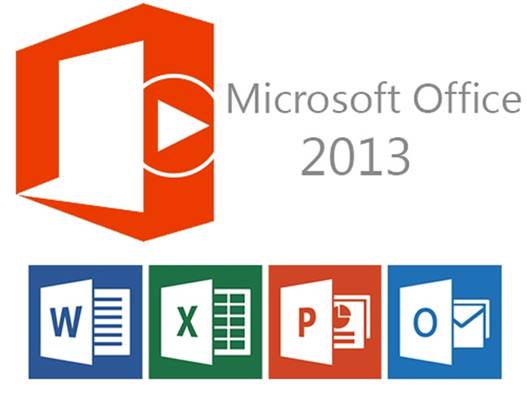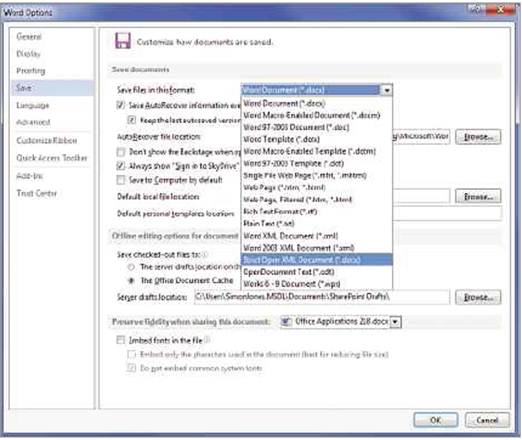Think back to the period 2006-9 and you
might remember a great hoo-hah about Office file formats that rumbled on for
years. Microsoft introduced its Office Open XML (OOXML) file formats DOCX, XLSX
and PPTX with Office 2007 and then sought to have them ratified as standards,
first by Ecma (formerly known as the European Computer Manufacturers
Association) and then by the ISO (the International Standards Organisation).
Many people asked why Microsoft hadn’t just
used the existing Open Document Format (ODF) instead of inventing its own.
Well, there wasn’t much wrong with ODF except that it couldn’t represent
everything in Microsoft Office documents, and back then it didn’t even define
the functions you could use in a spreadsheet. Both ODF and OOXML are based on
zipped XML text, making OOXML in particular far smaller and more robust than
the old binary formats of DOC, XLS and PPT.

Steering OOXML through ECMA wasn’t too much
of a problem for Microsoft, but ISO standardisation was far more difficult. ISO
insisted that all the “legacy” features in OOXML such as the options that said
“lay out the document like Word 95”, without defining what that was should be
corralled together with the intention of phasing them out. Thus the Office Open
XML file formats became an ISO standard in two flavours, Transitional and
Strict and neither Office 2007 nor 2010 could save in the Strict format since
their internals still relied on some of those legacy features. Office 2010
could, however, open Strict Open XML files created by other applications, not
that there were any mainstream applications that could write them. But the
standard was published so that anyone could write an application that would
create files in that format.
Now, with the impending release of Office
2013, you’ll be able to use Office to open and save Strict Open XML files as
defined in ISO standard 29600. Their file extensions will remain the same DOCX,
XLSX, PPTX and so on – and the Strict format will not be the default format out
of the box. That will still offer a choice between Transitional Open XML and
Open Document Format, but the ODF flavour will now be ODF 1.2. Providing ODF
1.2 gives better compatibility between Microsoft Office and Open Office or
Libre Office but, perversely, worse compatibility between Office 2013 and 2010
or 2007 when using ODF files. Office 2007 and 2010 can save to only ODF 1.1 and
can’t open ODF 1.2, but Office 2013 can’t save to ODF 1.1. This makes editing
an ODF document in Office 2013 a one-way trip, since once it’s saved in ODF 1.2
format, you can’t then use it in Office 2007 or 2010.
Microsoft supported ODF 1.2 and its
standardisation through OASIS, particularly in its definition of the functions
used in its spreadsheets. Until ODF 1.2, they were left to individual companies
writing the applications that used the ODF 1 and 1.1 formats, meaning that
spreadsheets that were nominally saved in the same file format were in effect
incompatible, because competing applications could read their data but none of
their formulae. ODF 1 is an ISO standard, but virtually no applications use it.
ODF 1.2 is expected to be put forward for ISO ratification shortly; meanwhile,
work on ODF continues, including adding change tracking to its specification.
“ISO insisted that all ‘legacy’
features in OOXML should eventually be phased out”

Office
2013 can now save and open Strict OOXML documents, and its ODF support moves up
to version 1.2
Which Office versions can Open and Save what file
formats?
File formats:
Binary format: DOC, XLS, PPT
Office 97: Open/Save
Office 2000: Open/Save
Office XP: Open/Save
Office 2003: Open/Save
Office 2007: Open/Save
Office 2010: Open/Save
Office 2013: Open/Save
Transitional Open XML: DOCX, XLSX, PPTX
Office 2000: Open/Save (Require a free
Compatibility Pack)
Office XP: Open/Save (Require a free
Compatibility Pack)
Office 2003: Open/Save (Require a free
Compatibility Pack)
Office 2007: Open/Save
Office 2010: Open/Save
Office 2013: Open/Save
Strict Open XML: DOCX, XLSX, PPTX
Office 2010: Open
Office 2013: Open/Save
ODF 1.1: ODT, ODS, ODP
Office 2007: Open/Save
Office 2010: Open/Save
Office 2013: Open
ODF 1.2: ODT, ODS, ODP
Office 2013: Open/Save
PDF: PDF
Office 2007: Save
Office 2010: Save
Office 2013: Open (Convert)/Save
Compatibility Mode
New users of Office 2007, 2010 and 2013 are
often confused by the words “Compatibility Mode” that appear in the application
title bar when they open certain documents. A reader named Bonnie recently
emailed me as she’d just upgraded to Office 2010: “Not sure what this is but
someone mentioned I should change it. I don’t know what it is, nor how to get
rid of it? I did look on the internet and found something to try, but it didn’t
work. Can you explain to me why I need to change this and if so, how, since
I’ve seen this in the title bar of some documents when I open them?”
You’ll see Compatibility Mode whenever you
open a document that was saved in Word 97-2003 or Word 2007 format, and it
means that not all the features of your version of Word are available to you in
that document since they couldn’t be saved in that format. Compatibility Mode
is used to ensure that new features of later versions aren’t accidentally
introduced into earlier documents, unless you explicitly choose to “upgrade” them.
This means that documents created in Word 2007 and before will always display
and print correctly in that version of the application, whether or not they’ve
been edited in a later version.
If you want to use newer features, or take
advantage of the reduced file size or increased robustness of a new format,
then click File/ Info/ Convert.
Word 2010 DOCX files can be opened by Word
2007 and by Word 2003, 2002 (XP) and 2000 if the user has installed the
Compatibility Pack, which has been available since late 2006, so there
shouldn’t be any problems if you do decide to convert a document to Word 2010
format. Plus, you can always use File | Save As to downgrade the document to
97-2003 format again later, if necessary. (Again, this may involve minor layout
changes, so it’s best to check the document after converting if you’re worried.
Just open the original document and the converted one side by side to do a
visual check that everything is legible and where you expect it to be.)

Word
2010 DOCX files can be opened by Word 2007 and by Word 2003, 2002 (XP) and 2000
if the user has installed the Compatibility Pack
When you use the Compatibility Pack to open
new format documents in older versions of Office, you’ll find that any features
introduced in the newer applications will usually be gracefully downgraded to
work with the older version: for instance, Smart Art will be replaced by a
simple image of what the Smart Art should look like. You can reposition or
resize the image using the earlier application, but you can’t edit the
individual elements that make up the Smart Art. Usefully, however, when you
save your edited document in OOXML format and open it with Office 2007 and
above, that Smart Art will become editable in its new position, or at its new
size. This is one reason for sticking with the OOXML file formats (DOCX, XLSX,
PPTX) and not downgrading them to the older binary file formats; if you do
that, the change from Smart Art to a static image becomes permanent.
“PDF files don’t include all the
information necessary to recreate an editable document”